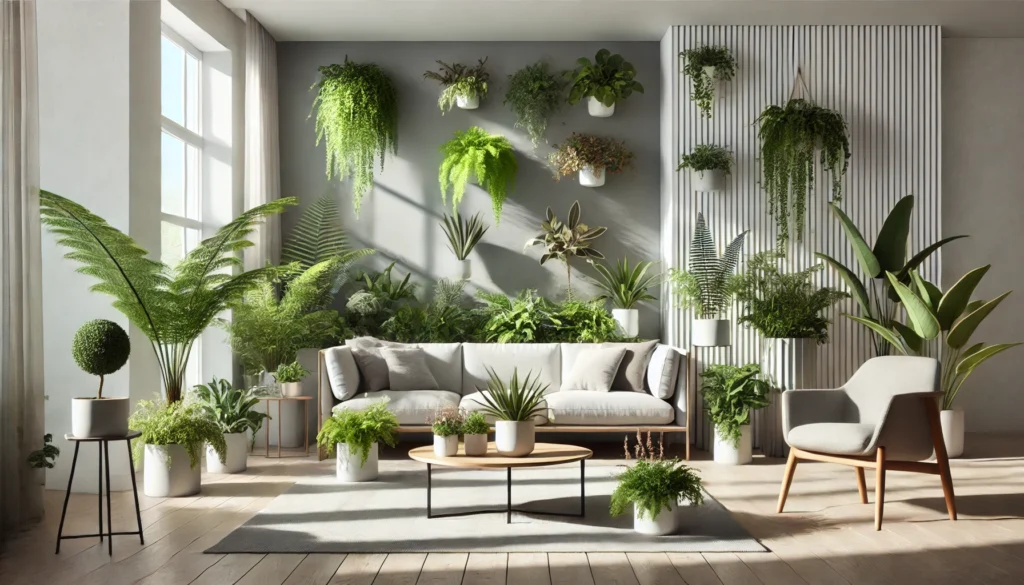
Essential Tips for New Plant Owners at Home: A Beginner's Guide to Thriving Plants
Becoming a plant parent can be a rewarding experience, but it often comes with a steep learning curve. Whether you’re bringing home your first houseplant or looking to expand your indoor garden, tips for new plant owners at home are essential for ensuring your plants thrive. With the right knowledge, you can avoid common pitfalls and enjoy the beauty of healthy, flourishing greenery in your space. In this guide, we’ll share simple yet effective tips to help you grow strong, vibrant plants with ease, even if you’re just starting out.
Table of Contents
ToggleUnderstanding Your New Plant
When you bring a new plant into your home, it’s essential to understand its basic needs to help it thrive. Each plant species has unique requirements, but the key to success lies in meeting these needs consistently. Here’s how you can give your new plant the best start:

Know Your Plant’s Type:
Before caring for your new plant, research its species. Some plants thrive in bright, direct sunlight, while others prefer low-light environments. Knowing whether it’s a tropical, succulent, or flowering plant will guide you on light, water, and temperature needs.
Optimal Light Conditions:
Light is crucial for plant health. Ensure your plant receives the right amount of light, whether it’s indirect sunlight, partial shade, or full sun. Avoid placing your plant in a spot where it’s exposed to harsh midday sun, as this can lead to leaf burn.
Watering Needs:
Different plants have different water requirements. Some need frequent watering, while others prefer to dry out between waterings. Always check the soil before watering—if it feels dry an inch or two down, it’s time to water. Be cautious not to overwater, as it can lead to root rot.
Soil and Drainage:
The right soil helps retain moisture but allows excess water to drain. For most plants, well-draining soil is best. Make sure your pot has drainage holes to prevent water from accumulating at the bottom.
Temperature and Humidity:
Each plant species has its ideal temperature range. Most indoor plants do well in temperatures between 60-75°F (15-24°C). Humidity also plays a role—tropical plants typically require higher humidity levels, while desert plants thrive in drier conditions.
Regular Care Routine:
Establish a regular care routine based on your plant’s specific needs. Regularly check for pests, remove dead leaves, and rotate your plant to ensure even growth.
Proper Lighting for Healthy Growth
Lighting is a key factor in ensuring your plant thrives. Understanding the right lighting conditions for your specific plant will promote healthy growth and vibrant foliage. Here’s what you need to know:
Types of Light:
- Direct Light: This is sunlight that comes straight through a window. It’s ideal for plants that require full sunlight, like succulents or certain flowering plants. Be cautious, as direct light can scorch some plants’ leaves.
- Indirect Light: This occurs when sunlight is filtered through a curtain or reflected off surfaces. It’s perfect for most houseplants like ferns, peace lilies, or the Cast Iron Plant. Indirect light mimics the natural conditions of a forest floor.
- Low Light: Some plants, such as the Snake Plant or ZZ Plant, can thrive in low-light conditions. These plants adapt well to spaces with little to no direct sunlight, like bathrooms or corners of rooms.
How to Position Your Plants:
- Near Windows: Place plants with high light needs near east or south-facing windows.
- Avoid Direct Sun: For plants that prefer indirect light, place them a few feet away from a window to avoid harsh sun exposure.
- Artificial Light: If natural light is limited, consider using grow lights to supplement your plant’s needs, especially in the winter months.

Signs of Poor Lighting:
- Leggy Growth: Plants growing tall and spindly with few leaves may need more light.
- Yellowing Leaves: This can indicate both overwatering and insufficient light.
- Slow Growth: A lack of proper light can cause stunted growth and a weak plant structure.
By adjusting your plant’s exposure to the right type of light, you set the foundation for long-term health and vitality. Make sure to assess your space and choose the best lighting for your plants’ needs.
Watering: The Key to Thriving Plants
Proper watering is essential for healthy plant growth. Too much or too little water can harm your plants, so it’s important to understand the needs of each plant species. Here’s a simple guide to watering your plants correctly.
Know Your Plant’s Watering Needs: Different plants have different watering requirements. Some, like succulents, prefer to dry out between waterings, while others, like ferns, thrive in consistently moist soil. Always research your plant’s specific needs for the best results.
How to Water:
- Check the Soil: Before watering, stick your finger about an inch into the soil. If it feels dry, it’s time to water. If it’s still moist, wait another day or two.
- Water Thoroughly: When you water, do so thoroughly until water drains from the bottom of the pot. This ensures the roots receive adequate moisture.
- Avoid Standing Water: Always empty excess water from the saucer beneath the pot. Standing water can cause root rot.
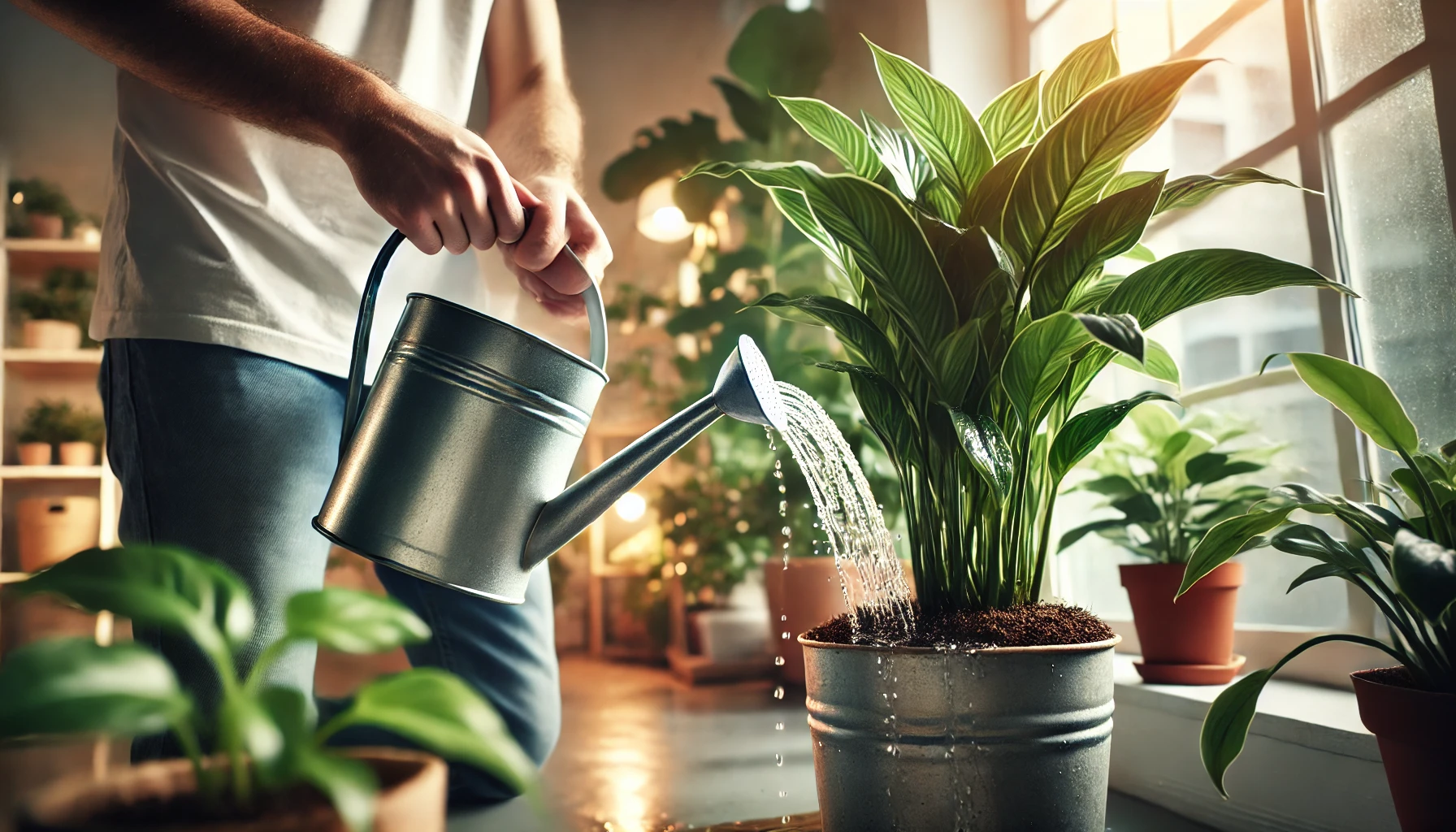
Watering Frequency: Watering frequency depends on factors like temperature, humidity, and plant type. During warmer months, most plants need more frequent watering, while in cooler months, they may need less. Always adjust based on the plant’s specific needs.
Signs of Overwatering:
- Yellowing leaves
- Mushy or soft stems
- Root rot (brown, slimy roots)
Signs of Underwatering:
- Brown, crispy leaf tips
- Wilting leaves
- Dry, cracked soil
By understanding your plant’s watering needs and practicing consistent care, you’ll promote healthier growth and ensure your plants thrive.
Essential Tools for New Plant Owners
Starting your plant journey requires a few essential tools to make the process easier and more enjoyable. As a new plant owner, having the right equipment ensures your plants thrive with minimal stress.
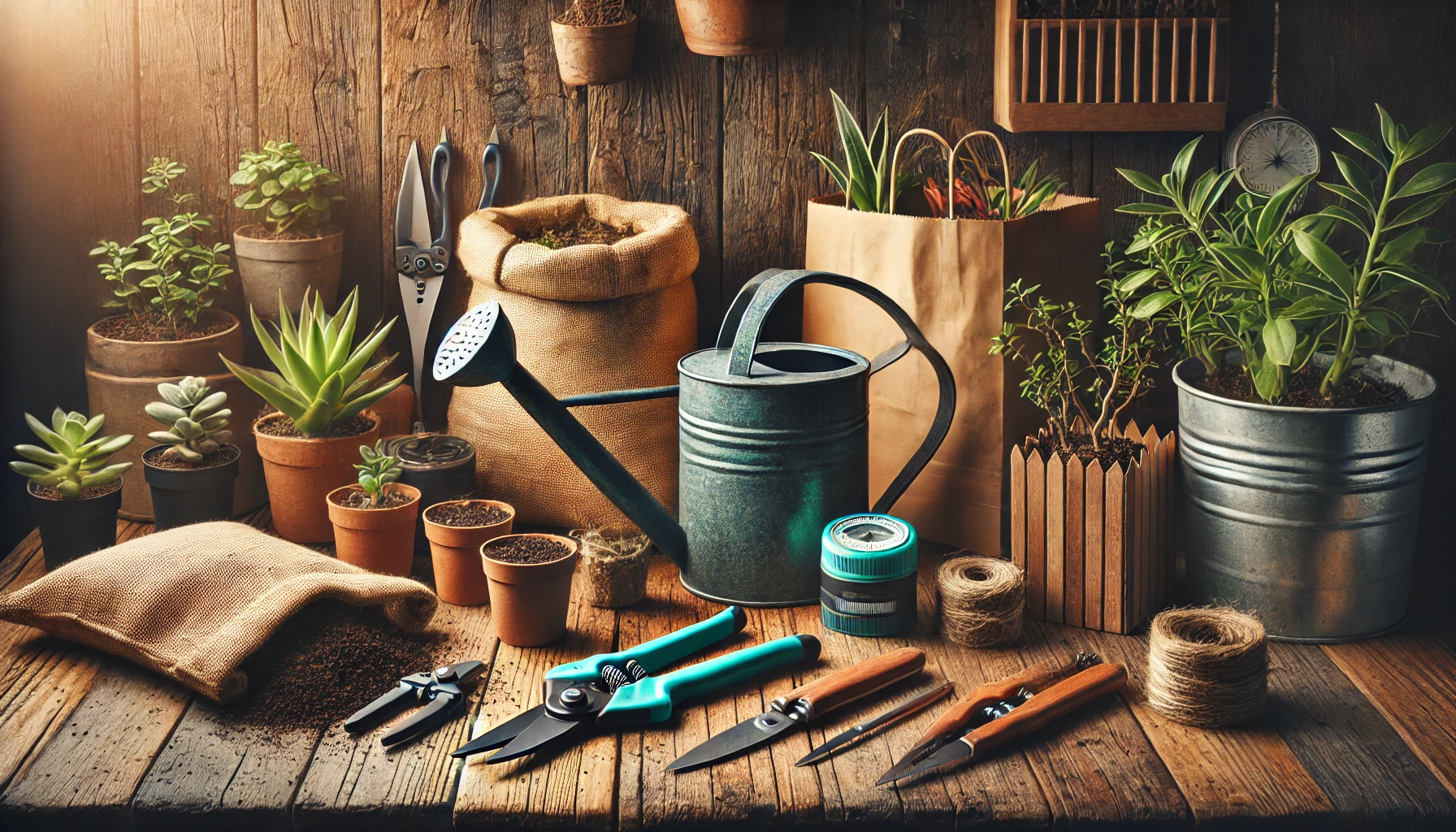
Watering Can:
A watering can with a long, narrow spout is ideal for precise watering, especially for indoor plants. It helps you direct water evenly and prevents overwatering, a common mistake for beginners.
Pruning Shears:
Sharp, clean pruning shears are essential for trimming dead or damaged leaves. Regular pruning encourages healthy growth and keeps your plants looking their best. Choose a pair that’s comfortable and easy to handle.
Moisture Meter:
A moisture meter helps you determine when it’s time to water your plants. It prevents underwatering or overwatering by measuring the soil’s moisture level, which is crucial for plant health.
Potting Soil and Containers:
Invest in high-quality potting soil specific to your plant’s needs (e.g., cactus, succulent, or houseplant mix). Proper containers with drainage holes allow for better root health by preventing water from pooling at the bottom.
Plant Fertilizer:
Fertilizer provides essential nutrients for your plants. Use a balanced, slow-release fertilizer or liquid feed that suits your plant types. This promotes growth and ensures they remain vibrant and healthy.
Grow Light:
If you don’t have access to plenty of natural sunlight, a grow light can help. These lights are designed to provide the right spectrum of light to support plant growth, especially during the winter months or in low-light environments.
Spray Bottle:
A spray bottle is great for increasing humidity around plants that thrive in a moist environment. Light misting can also help with dusting off leaves and refreshing plants like ferns.
With these tools, you’ll be well on your way to becoming a successful plant owner. They make plant care simpler, more efficient, and help you avoid common pitfalls.
Maintaining Humidity: Keeping Plants Happy
Proper humidity is essential for many indoor plants to thrive. Too little moisture in the air can cause leaves to brown or drop, while high humidity can encourage mold or mildew. Here’s how to maintain the right balance for your plants:
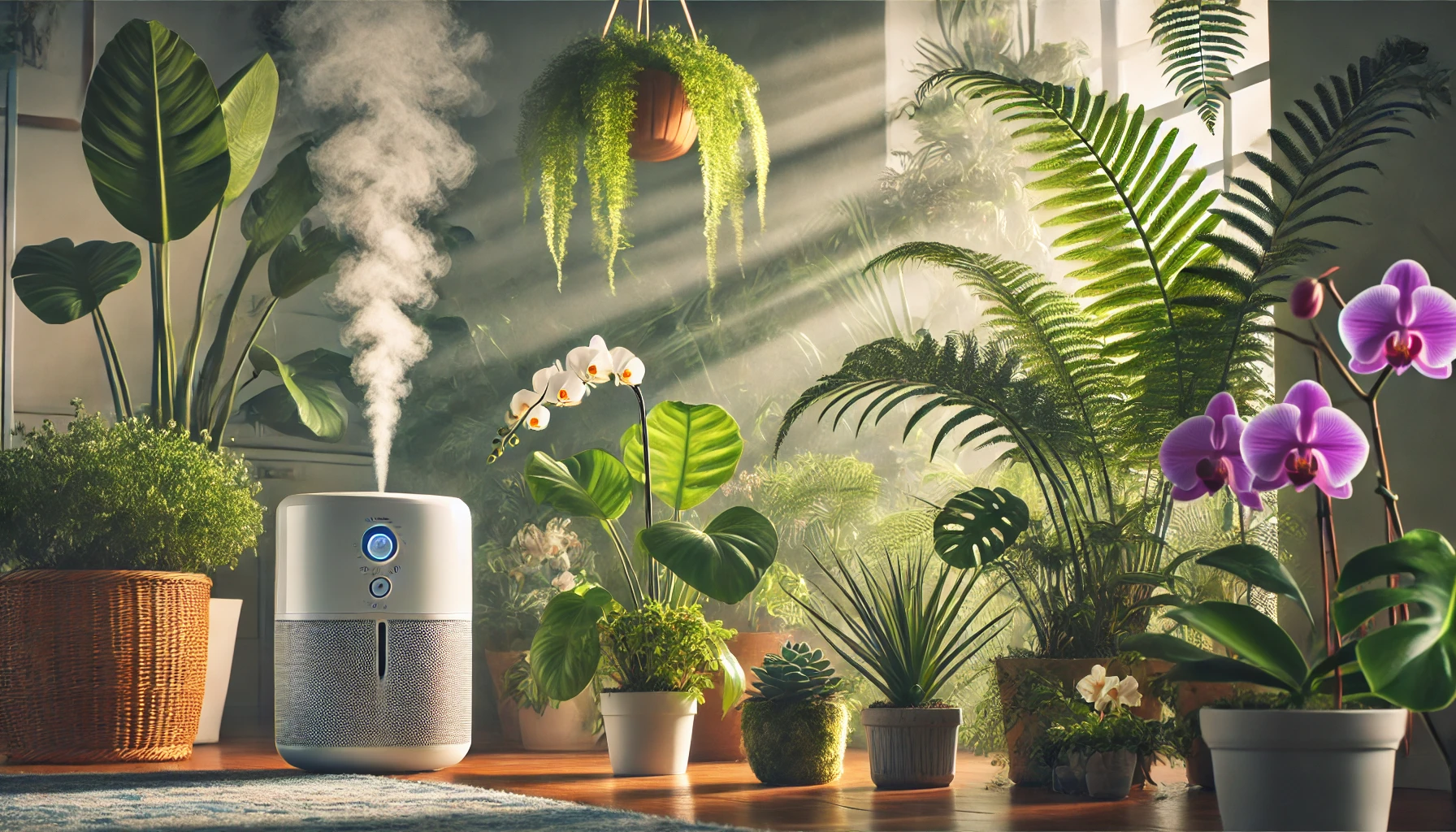
Why Humidity Matters: Many houseplants, especially tropical varieties, rely on higher humidity levels to mimic their native environments. Humidity affects a plant’s ability to absorb moisture through its leaves, which directly influences growth and overall health.
Ideal Humidity Levels: Most indoor plants thrive with humidity levels between 40% and 60%. However, tropical plants like ferns, orchids, and calatheas may need 60% or higher to stay healthy.
How to Increase Humidity:
- Use a Humidifier: A simple and effective way to boost humidity around your plants, especially in winter when indoor air is dry.
- Group Plants Together: Placing plants close together creates a microenvironment with higher humidity, as they release moisture through transpiration.
- Pebble Trays: Place a shallow tray filled with water and pebbles under your plants. As the water evaporates, it raises the humidity around the plant.
- Misting: Lightly misting your plants can temporarily increase humidity, but it’s not a long-term solution and should be done in moderation to avoid mold growth.
How to Decrease Humidity: If humidity becomes too high, it can promote mold or fungal growth. To lower humidity:
- Improve Air Circulation: Ensure good airflow around plants by using a fan or opening windows.
- Move Plants Away from Each Other: Spread plants out to reduce moisture buildup.
- Control Watering: Avoid overwatering, as excessive moisture in the soil can contribute to high humidity levels around the plant.
Signs Your Plant Needs More Humidity:
- Browning leaf tips or edges
- Yellowing or wilting leaves
- Leaf drop, especially in tropical plants
By understanding and managing humidity, you can create a more comfortable environment for your plants, ensuring they stay healthy and vibrant.
Fertilizing for Stronger Plants
Fertilizing your plants properly is essential for promoting healthy growth and vibrant blooms. The right nutrients can make all the difference in the strength and vitality of your plants.
Why Fertilize? Plants need three main nutrients to thrive: nitrogen, phosphorus, and potassium. These nutrients help with leaf growth, root development, and overall plant health. Regular fertilization ensures your plants have the nutrients they need, especially when growing in containers or soil that lacks natural fertility.
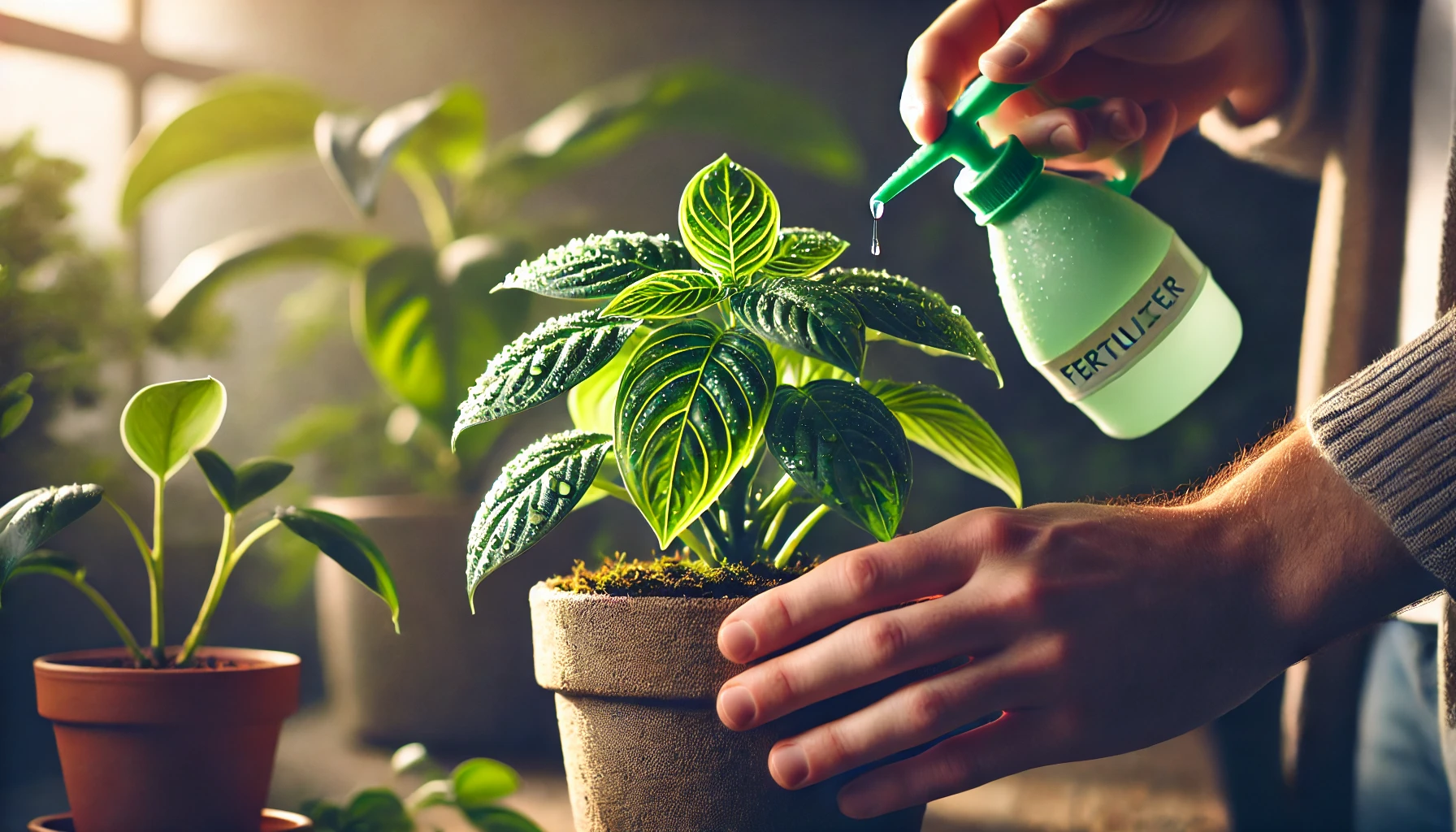
When to Fertilize:
- Growing Season (Spring and Summer): Plants are most active during these months, so fertilize every 4-6 weeks.
- Dormant Period (Fall and Winter): Many plants slow down in the colder months, so reduce fertilizing to once every 6-8 weeks, or stop altogether.
Types of Fertilizers:
- Liquid Fertilizers: Easy to apply and absorb quickly. Ideal for plants in pots.
- Slow-Release Granules: Gradually release nutrients over time, perfect for outdoor garden beds or large plants.
- Organic Fertilizers: A natural choice that improves soil health while feeding plants.
How to Fertilize:
- For Liquid Fertilizers: Dilute as instructed and water your plants, avoiding direct contact with the foliage to prevent burns.
- For Granular Fertilizers: Sprinkle around the base of the plant and water thoroughly to help distribute nutrients.
Signs of Over or Under Fertilizing:
- Overfertilizing: Brown leaf tips, yellowing leaves, or stunted growth.
- Underfertilizing: Yellowing leaves, slow growth, or pale foliage.
By following these simple steps and choosing the right fertilizer, you can ensure your plants grow stronger and healthier, with vibrant colors and robust development all year round.
Becoming a successful plant owner is a rewarding journey that doesn’t have to be overwhelming. By following these tips for new plant owners at home, you can create a thriving indoor garden that not only adds beauty to your space but also nurtures your wellbeing. Remember, choosing the right plants, understanding their needs, and staying consistent with care will set you up for long-term success.
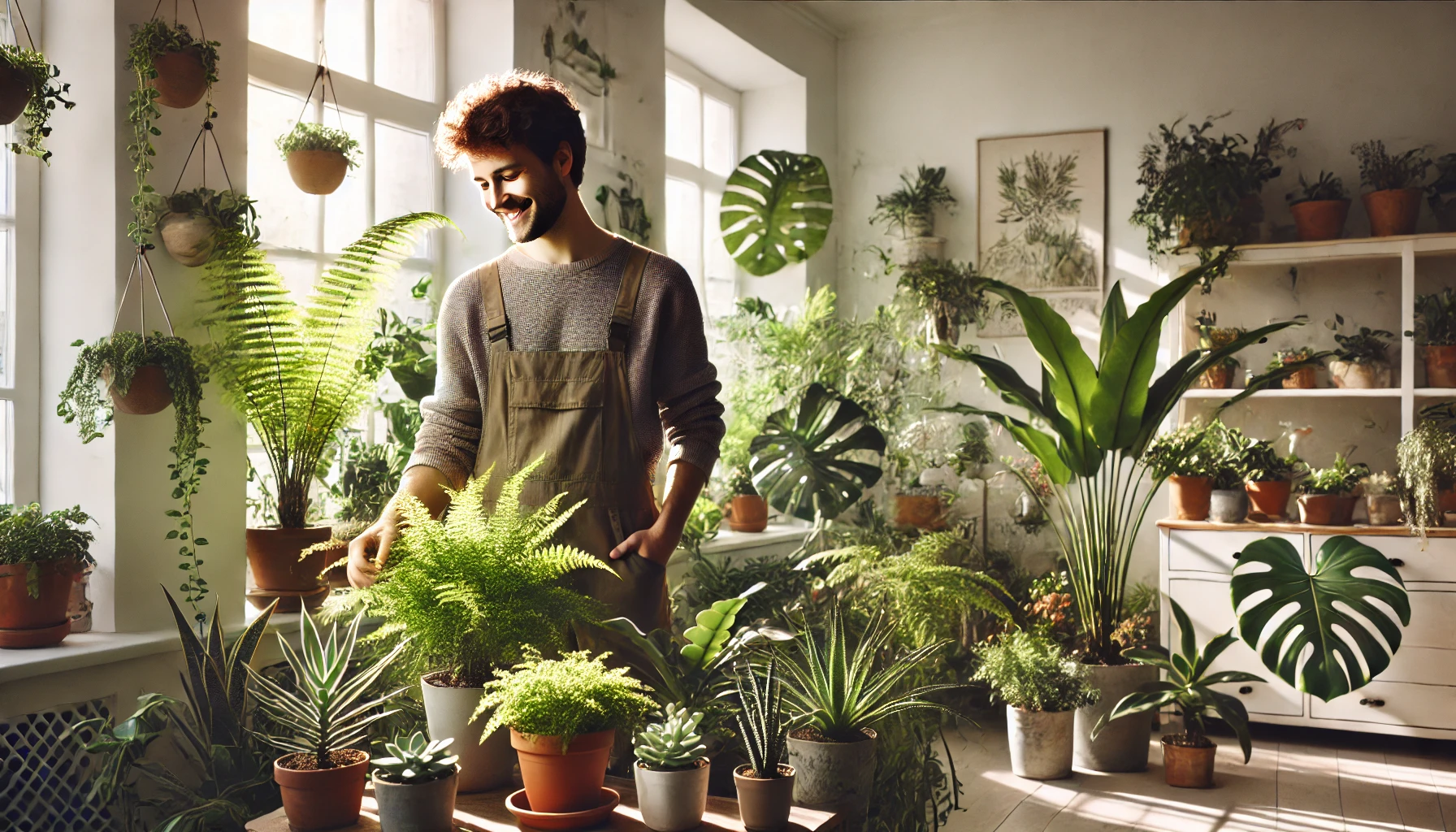
Whether it’s learning how to water correctly, providing the right light, or nurturing your plants with the proper tools, each step helps you build a stronger connection with your plants. With patience and a little attention, you’ll soon discover the joy of watching your plants grow and flourish in your home.
Happy plant parenting! Don’t hesitate to experiment, and always enjoy the process of learning and growing alongside your green companions.
Frequently Asked Questions(FAQ)
What are the best indoor plants for beginners?
For new plant owners, it’s important to start with low-maintenance plants. Some great options include the snake plant, pothos, and ZZ plant. These plants thrive in various conditions and don’t require much care, making them ideal for beginners.
How often should I water my indoor plants?
The frequency of watering depends on the type of plant, its size, and the environment. As a general rule, wait until the top 1-2 inches of soil are dry before watering. Be careful not to overwater, as this can lead to root rot.
How do I know if my plant is getting enough light?
Most indoor plants thrive in bright, indirect light. If your plant is growing tall and leaning towards the light source, it’s likely not getting enough light. On the other hand, if the leaves become scorched or discolored, your plant may be getting too much direct sunlight.
How can I prevent overwatering my plants?
To prevent overwatering, always check the soil moisture before adding water. Ensure your pots have drainage holes, and allow excess water to escape. Use a moisture meter or stick your finger in the soil to gauge if your plant needs watering.
Should I fertilize my indoor plants?
Yes, but be cautious. Over-fertilizing can harm your plants. Use a balanced, water-soluble fertilizer during the growing season (spring and summer) and follow the manufacturer’s guidelines for dilution. Many plants don’t need fertilizing in the fall and winter.
How do I deal with pests in my plants?
Regularly check your plants for signs of pests such as yellowing leaves or tiny webs. To remove pests, try wiping leaves with a damp cloth or using natural remedies like neem oil. If infestations are severe, consider using insecticidal soap or consulting a plant expert.
What should I do if my plant’s leaves turn yellow?
Yellowing leaves can indicate a variety of issues, such as overwatering, nutrient deficiency, or too much direct sunlight. Check the plant’s care routine, and adjust watering and light conditions accordingly. Removing yellow leaves can also help encourage new growth.
Can I grow plants without natural sunlight?
Yes, many plants can thrive in low-light environments. Plants like the snake plant, pothos, and peace lily are perfect for rooms with minimal natural light. You can also consider using grow lights to supplement sunlight and promote healthy growth.
How do I keep my plants healthy long-term?
To ensure long-term plant health, provide proper watering, adequate light, and occasional pruning. Regularly check for pests and disease, and re-pot your plants if they become root-bound. Following these basic care tips will help your plants thrive for years.
When should I repot my indoor plants?
Repotting should be done when your plant outgrows its current pot, often every 1-2 years. Signs that your plant needs repotting include roots growing through the drainage holes, slow growth, or the plant becoming top-heavy. Always choose a pot that’s 1-2 inches larger in diameter than the current one.
